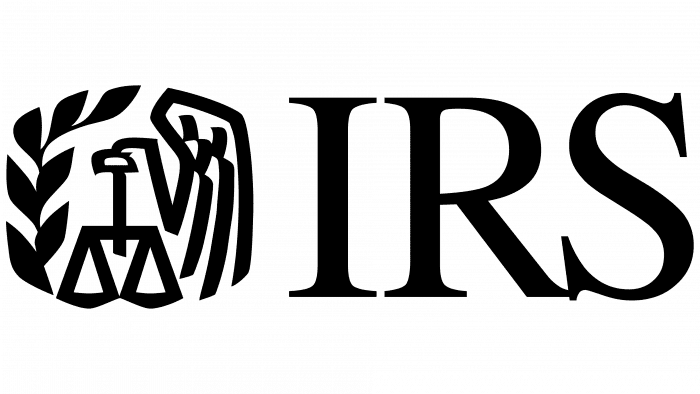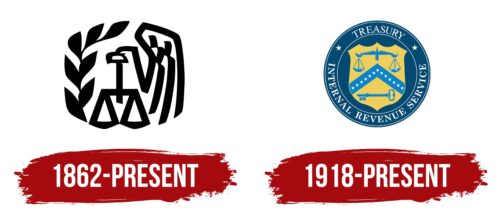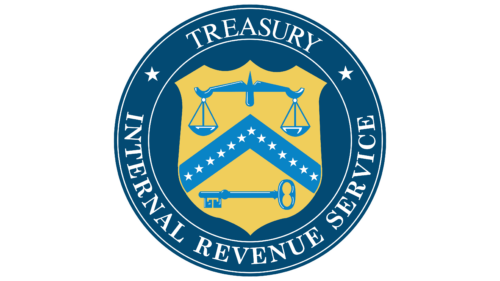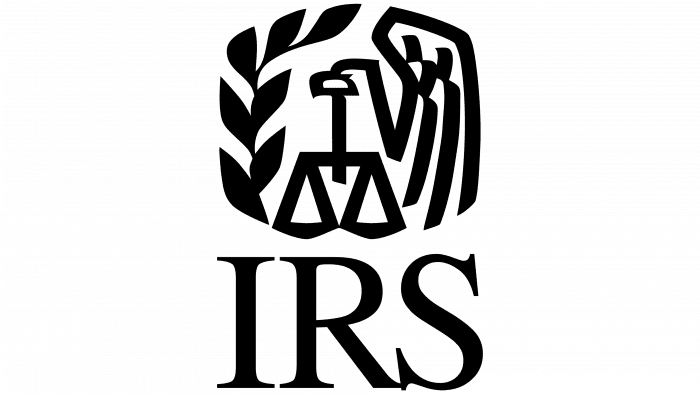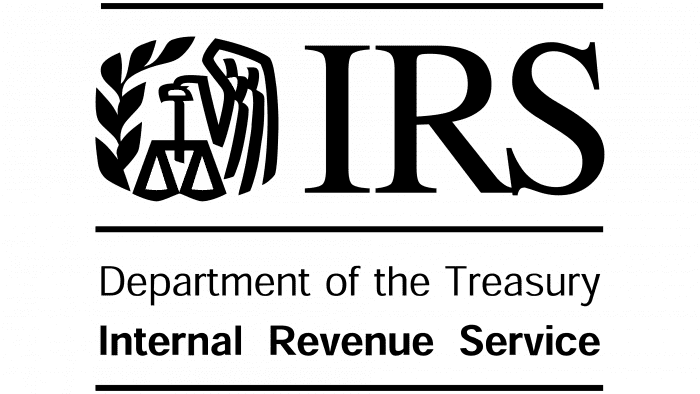The IRS logo promises fair accounting and impartiality. Profits and expenses will be weighed, and everyone will be fairly compensated. For those who abide by the laws, the emblem guarantees peace, order, and confidence in the future.
IRS: Brand overview
| Founded: | July 1, 1862 |
| Headquarters: | Washington, D.C., United States |
| Website: | irs.gov |
IRS is the abbreviated name for the leading US tax control agency in the country. Its full name is Internal Revenue Service. The main task of this body is to administer tax legislation and collect taxes. Also, the responsibilities of this structure include:
- Providing tax assistance to the population.
- Detecting and preventing fraud in tax reporting.
- Monitoring the work of preferential programs.
- Complying with the law on affordable health care.
The headquarters of the organization is located in Washington DC.
The IRS was established in 1862 to calculate the first government income tax to be paid for the civil war in the United States. The service was created under the federal government Commissioner of Internal Revenue. This measure made it possible to compensate for over a fifth of the military costs. When the agency expired (10 years later), a tax bureau was opened on its basis. And in 1953, its status was increased and renamed to Internal Revenue Service.
Meaning and History
The official logo of this organization has gone through all the stages of evolution. Today it exists in two versions, which are still in use today. Their basic features are strictness and adherence to the letter of the law. Moreover, this is a structurally complex emblem. It consists of three allegorical images conveyed in clear lines, even segments, and classical power attributes.
What is IRS?
IRS is the Internal Revenue Service, part of the Department of the Treasury in the USA. The agency’s main duty is to oversee compliance with the Internal Revenue Code and ensure fair tax collection. Additionally, the IRS performs many other tasks related to taxation. The agency was formed in 1862 to collect money for military expenses during the American Civil War.
1862 – today
Although the service’s original name disappeared and after the approval of the constitutional amendments in the field of taxes, it was renamed, its logo has remained. He personifies a difficult time, a fair decision, the legislative overcoming of difficulties. All this is expressed in traditional symbols: Themis scales, bald eagle, laurel branch.
They are arranged so that they create a borderless emblem with no words or borders. The bird’s wing has a multi-component structure: three short strokes on the wide part, two long ones forming feathers, and one endless line, which depicts the silhouette of an eagle. There is a laurel branch separately. It occupies the entire left side, where the bird’s head is turned. The scales are located between them.
Moreover, the logo is hexagonal and does not contain text because graphic elements speak for it. After all, the United States’ main mascot, the bald eagle, is represented on the corporate logo. A large bird looks to the left with a proud gaze. It has a sharp hooked beak and one raised wing, the outer part of which replaces the logo’s right edge. A laurel branch is used as a border on the left. The neck and wing line forms the English letter “V.,” a scale that occupies the lower central zone with two bowls. The line coming from them is at the same time the neck of the bird and the handle of the scales.
1918 – today
The IRS seal is a classic rondelle with an accentuated middle and a wide rim around the edge. In the center is a beige shield with six sharp ends. It features a scale (top), a triangular ribbon with thirteen stars, and a key (bottom). Behind a thin white ring is the inscription “Internal Revenue Service” – the full name of the tax agency. On the right and left, it is separated from the word “Treasury” by two stars.
IRS: Interesting Facts
The Internal Revenue Service (IRS) is the U.S. government agency responsible for collecting taxes and enforcing tax laws.
- Start: President Abraham Lincoln and Congress created the IRS in 1862 to fund the Civil War, initially calling it the Bureau of Internal Revenue. It was renamed in the 1950s.
- First Income Tax: Introduced in 1862 to support the Civil War, the first income tax had rates between 3% and 5%. Though it was later repealed, the income tax was permanently established with the 16th Amendment in 1913.
- 16th Amendment: This 1913 amendment allowed Congress to tax income directly from any source, setting the stage for the current tax system.
- Tax Code Size: The U.S. tax code is complex and lengthy, reflecting changes in policy, social priorities, and financial complexities over time.
- E-Filing Introduction: 1986 the IRS started electronic filing, making tax submission more efficient. Now, most tax returns are filed this way.
- VITA Program: The IRS offers the Volunteer Income Tax Assistance program, free tax help to those earning $57,000 or less, people with disabilities, and limited English speakers.
- Revenue and Budget: The IRS collects trillions in tax revenue annually, funding many government operations, yet it works with a budget much smaller than its total revenue.
- WWII Tax Changes: The 1943 Current Tax Payment Act introduced wage tax withholding to fund the war effort, a system that continues today.
- Enforcement and Help: The IRS uses audits, liens, and levies to ensure tax law compliance. It also has programs to help taxpayers settle debts and disputes.
- First Commissioner: In 1862, George S. Boutwell was the first Commissioner of Internal Revenue, organizing the administration of new tax laws.
These points highlight the IRS’s critical role in U.S. history, its function in funding government activities, and its work to enforce tax laws and support taxpayers.
Font and Colors
In the original version of the emblem, the text was absent because the central idea was expressed with the help of hand-drawn images. The color of the logo is monochrome and consists of black (image) and white (background).
The official font of the IRS is Helvetica. For technical purposes, Helvetica Condensed is used; for all others, Helvetica Rounded. The first is strict and businesslike; the second is soft and friendly. At the same time, the abbreviation in the logo is made with a typeface similar to Yeelim MF Bold. In addition to black and white, the corporate palette includes three colors: beige, light azure, and dark azure. They have been used in print.
IRS color codes
| Dark Cerulean | Hex color: | #004b74 |
|---|---|---|
| RGB: | 0 75 116 | |
| CMYK: | 100 35 0 55 | |
| Pantone: | PMS 3025 C |
| Portica | Hex color: | #efce58 |
|---|---|---|
| RGB: | 239 206 88 | |
| CMYK: | 0 14 63 6 | |
| Pantone: | PMS 121 C |
| Bondi Blue | Hex color: | #0785c5 |
|---|---|---|
| RGB: | 7 133 197 | |
| CMYK: | 93 32 0 23 | |
| Pantone: | PMS 7461 C |
